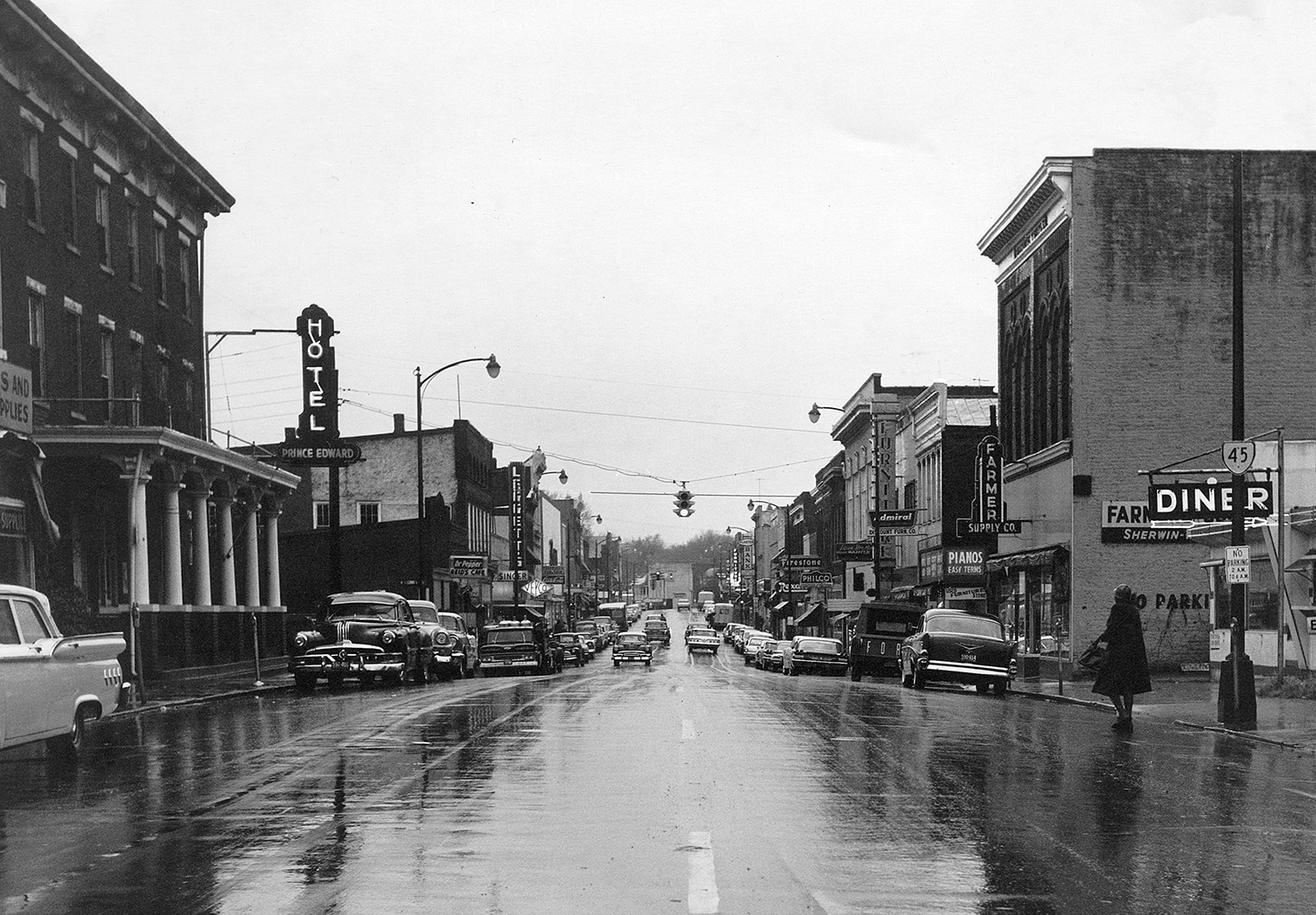RESOURCES
PLACES
Downtown Farmville
During the era of school closings and civil rights protests, downtown Farmville, Virginia stood as both a center of daily life and a battleground for the struggle against racial injustice. By 1963, Farmville’s small but symbolically charged Main Street was lined with segregated businesses, cafes, churches, and government buildings. Black residents, though essential to the town’s economy and workforce, were systematically excluded from white-owned shops, denied service at lunch counters, and relegated to separate entrances or seating areas in theaters and public facilities. The economic and physical geography of downtown reflected the deep racial divides of the segregated South.
During the summer of 1963, downtown Farmville became the epicenter of youth-led civil rights demonstrations protesting the continued closure of public schools, which had denied Black children education since 1959. Inspired by the national momentum of the Civil Rights Movement and emboldened by local organizing, Black students and residents took to the streets in nonviolent protest. One of the most active centers of demonstration was the sidewalk outside the Prince Edward County Courthouse on Main Street, where young protesters carried signs demanding, “We Want Education” and “Open Our Schools.” These marches were met with police surveillance and, at times, arrests, yet they were crucial in drawing national attention to the situation.
Key individuals played essential roles in organizing and sustaining these protests. Rev. L. Francis Griffin, known as the “fighting preacher,” was the most prominent local civil rights leader. He coordinated with the NAACP and provided leadership from his pulpit at the First Baptist Church, which also served as a staging area for marches and meetings. Barbara Johns, whose earlier 1951 student strike at Moton High School helped ignite the legal fight for integration, remained a symbol of youth activism, though by 1963 she had left Farmville. Young people like Charlene Harris, Beatrice Branch, and others led sit-ins, picket lines, and boycott campaigns in downtown businesses that upheld segregation or supported the school closings.
These protests reached their height in July 1963, when demonstrators peacefully defied court injunctions and curfews in a display of determined civil disobedience. Downtown Farmville, normally quiet and tightly controlled, was transformed into a visible arena of resistance. The courage of these local activists helped lay the groundwork for the Supreme Court’s Griffin v. Prince Edward County decision in 1964, which ultimately forced the county to reopen its schools.
